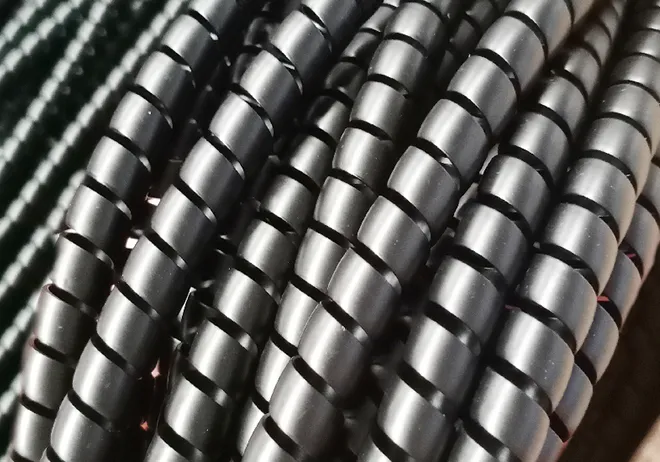Water Pipe Connector Solutions for Efficient Plumbing Systems and Durable Performance
Understanding Water Pipe Coupling A Comprehensive Guide
Water pipe coupling is a critical component in the realm of plumbing and fluid mechanics. Whether in residential homes, industrial facilities, or municipal water systems, understanding the functionality and importance of water pipe coupling can significantly enhance the efficiency and reliability of water transportation systems. This article will delve into the intricacies of water pipe coupling, its types, materials, installation processes, and maintenance tips.
What is Water Pipe Coupling?
Water pipe coupling refers to the connection of two or more pipes using a fitting that can join or separate the sections. The primary purpose of coupling is to allow the flow of water from one pipe segment to another without causing leakage or loss of pressure. Couplings are essential for extending pipe runs, repairing damaged sections, and accommodating changes in direction.
Types of Water Pipe Couplings
There are various types of couplings available, each designed to serve specific purposes
1. Plain Couplings These are the most basic form of couplings that are used to join two pipes of the same diameter end-to-end. They are straightforward in design and are ideal for short joints.
2. Reduced Couplings These couplings allow for the connection of pipes of different diameters. They are essential in instances where a transition is necessary, such as connecting a larger pipe to a smaller one.
3. Flexible Couplings These couplings are designed to allow for slight movements due to thermal expansion or shifting in the ground. They are ideal in situations where pipes may be subject to vibration or slight misalignments.
4. Union Couplings These allow for easy separation of pipe sections and are commonly used in applications requiring frequent maintenance. With a union coupling, a plumber can easily disassemble and reassemble pipes without needing specialized tools.
5. Compression Couplings These fittings provide a secure, water-tight seal without welding or soldering. They are commonly used in household plumbing and provide flexibility for installations.
Materials Used in Water Pipe Couplings
The material chosen for water pipe couplings plays a significant role in their durability and functionality. Here are some common materials
1. PVC (Polyvinyl Chloride) A popular choice for residential water systems due to its light weight, resistance to corrosion, and ease of installation.
2. Copper Known for its durability and anti-bacterial properties, copper piping is often used in households. However, it can be more expensive than other materials.
water pipe coupling

4. Ductile Iron Typically used in municipal water systems, ductile iron couplings can withstand high pressure and are incredibly durable.
Installation Process
The installation of water pipe couplings should be approached with care to ensure a leak-proof connection
1. Preparation Before installation, ensure that all pipes are clean and free of debris. Measure the length required for the coupling, allowing for any adjustments that might be needed.
2. Cutting the Pipes If necessary, cut the pipes using a pipe cutter to achieve a clean edge. This will help avoid any damage that could cause leaks.
3. Applying Sealant For threaded joints, applying tape or sealant can further reduce the risk of leaks.
4. Attaching the Coupling Securely attach the coupling to each pipe segment, ensuring it is straight and tight.
5. Testing After installation, turn on the water supply and check for leaks. If any leaks are detected, tighten the fittings and reassess the installation as necessary.
Maintenance Tips
Regular maintenance of water pipe couplings is crucial in preventing issues over time
- Inspect Joint Connections Regularly check for signs of leaks or wear at the coupling joints. - Maintain Water Pressure Ensure that water pressure remains within recommended limits to avoid stress on couplings. - Clean Periodically Remove any debris or buildup around the couplings to ensure proper function and longevity.
Conclusion
Water pipe coupling is an essential aspect of any plumbing system, facilitating the efficient flow of water and maintaining the integrity of the plumbing network. By understanding the types, materials, installation processes, and maintenance of couplings, homeowners and professionals alike can ensure reliable and lasting plumbing systems. Whether you are undertaking a DIY project or working with a professional plumber, knowledge of water pipe coupling will empower you to make informed decisions that contribute to the longevity and efficiency of your water distribution system.
-
Ultimate Spiral Protection for Hoses & CablesNewsJun.26,2025
-
The Ultimate Quick-Connect Solutions for Every NeedNewsJun.26,2025
-
SAE J1401 Brake Hose: Reliable Choice for Safe BrakingNewsJun.26,2025
-
Reliable J2064 A/C Hoses for Real-World Cooling NeedsNewsJun.26,2025
-
Heavy-Duty Sewer Jetting Hoses Built to LastNewsJun.26,2025
-
Fix Power Steering Tube Leaks Fast – Durable & Affordable SolutionNewsJun.26,2025

